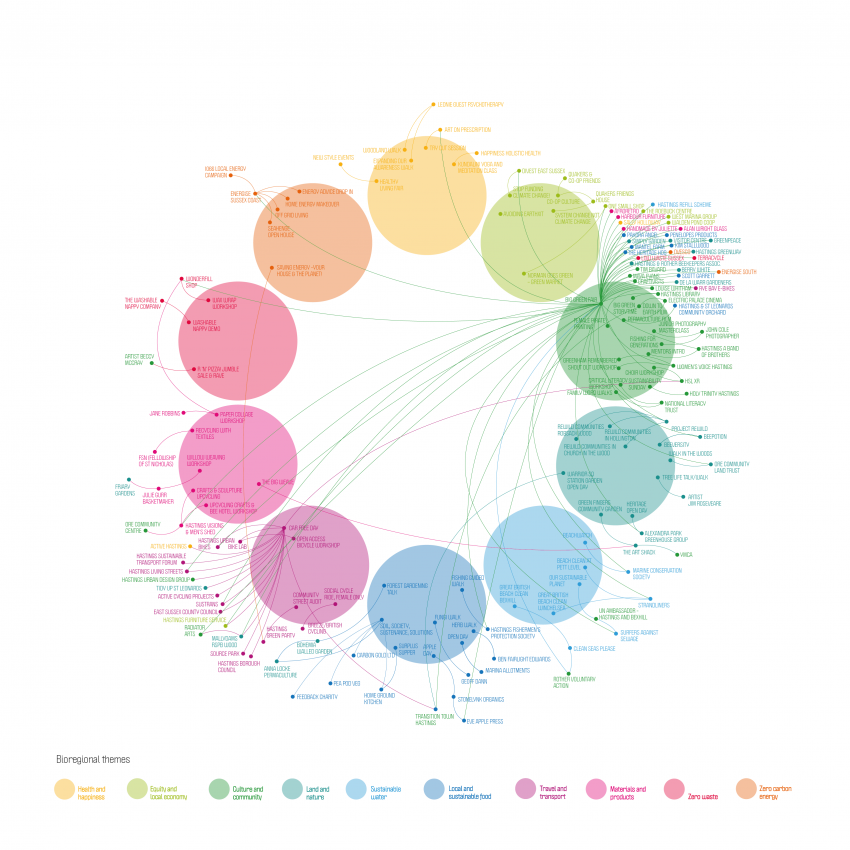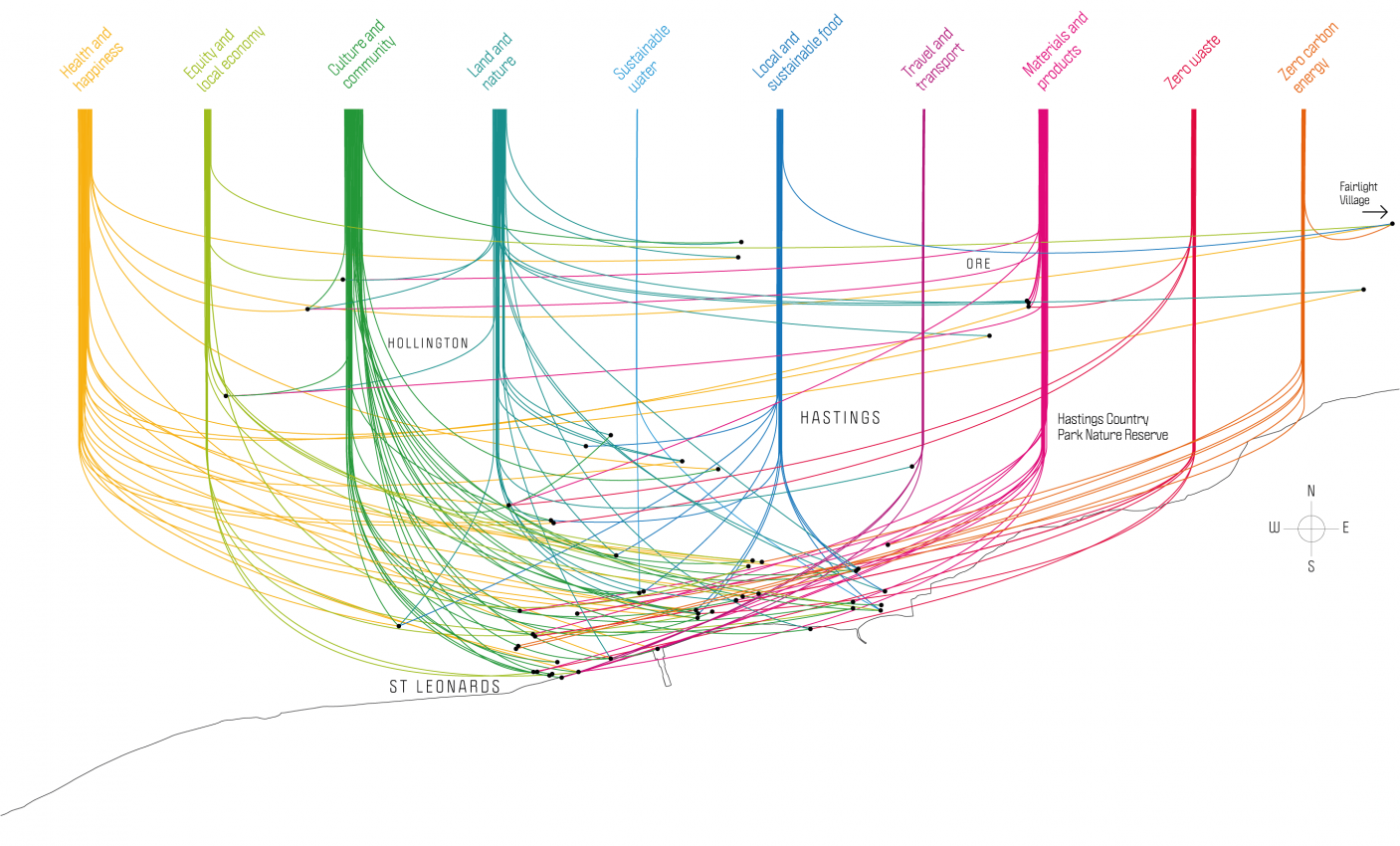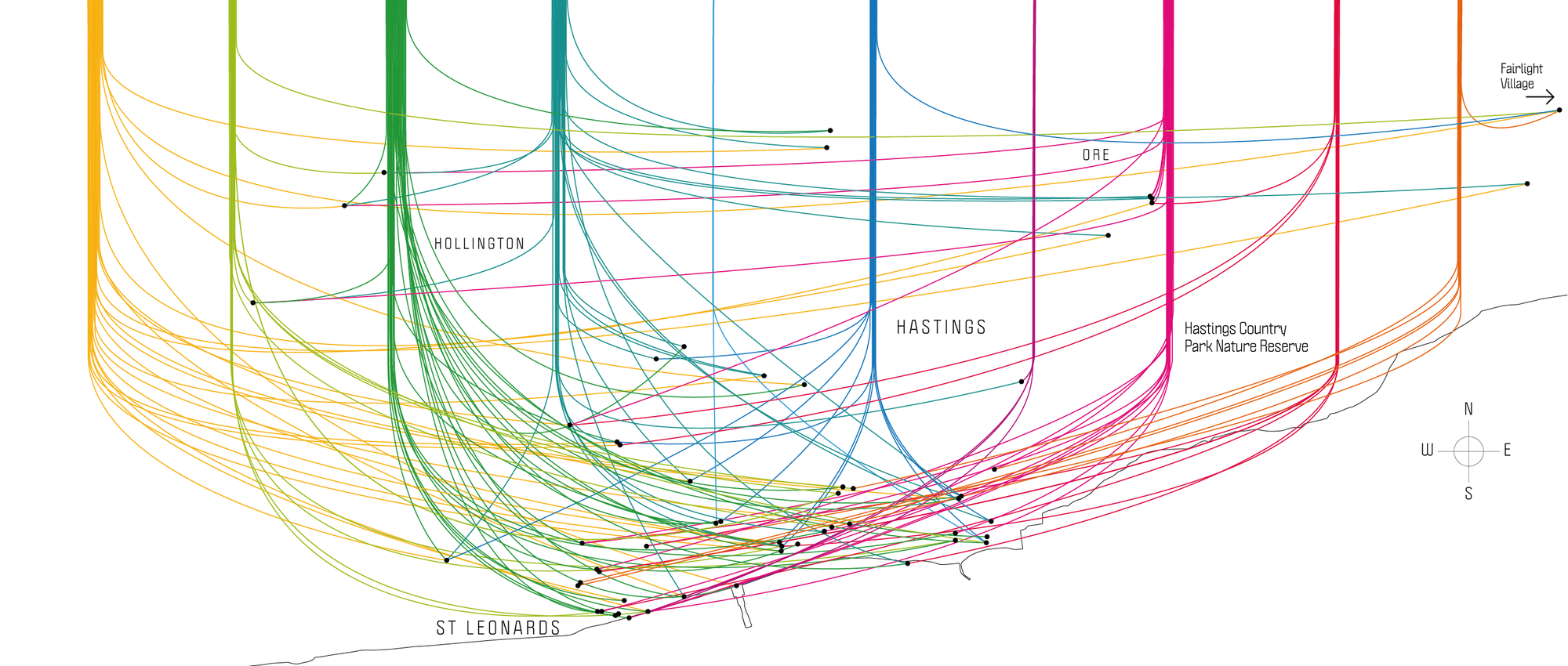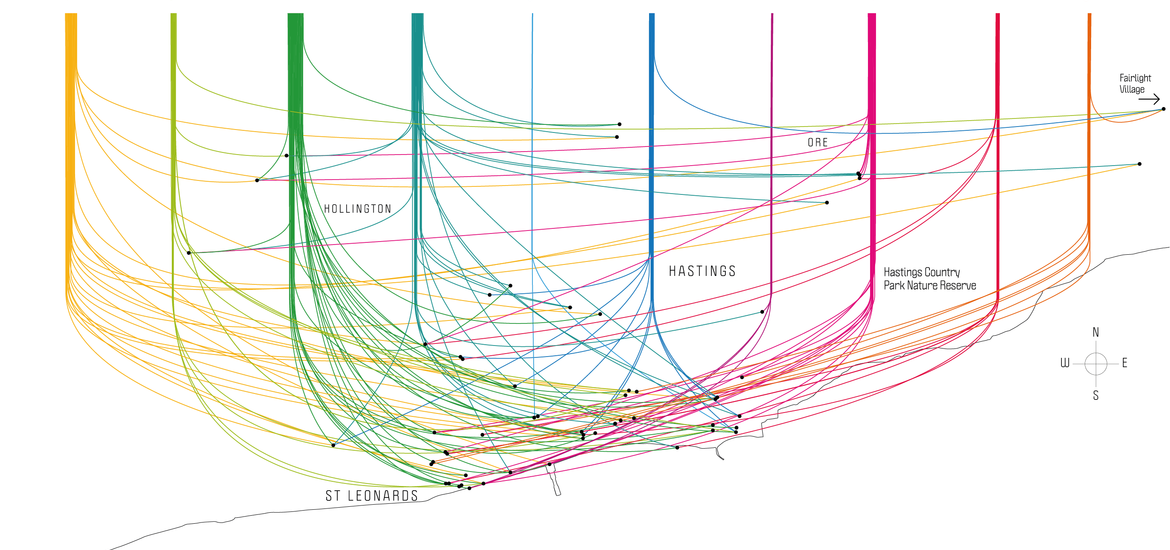This short paper was submitted to the Participatory Design Conference in 2020 and led to my attendance in a workshop called Commoning Design and Designing Commons. The workshop was designed to explore what participatory design researchers and practitioners can contribute to the commons, and how. It was an act of commoning in itself, a collaboration on the production of an open pluriversal card deck.
—
As part of my wider investigation into practices of commoning my recent research has involved working within my local community (Hastings, East Sussex, UK) and Transition Town group to design a festival of sustainable ideas called Sustainability on Sea festival. An act of commoning, collectively building social capital alongside new shared knowledge, the festival also acts as a platform for other commoning practices. This research explores how design practices can support, amplify and expand commoning practices. A local climate action network, or infrastructure, begins to be revealed around existing groups, businesses and members of the Transition Town group.
With a ‘research through design’ method the designer was embedded in the festival team for the duration of the project and designed data visualisations reflecting back on the collective practice. The visualisations here show mapping work to help reveal data patterns and identify leverage points.

Visualising the Bioregional themes and festival events has revealed what’s happening in the town – where the town is weak and where it is strong, as well as show opportunities for new possibilities. It has also led to mapping the town’s wider climate action ecosystem.

The visualisations helped to provide evidence of positive outcomes such as the level of collaboration, the amount of funds that stayed in the community, the positive emotional reactions to specific events and the dominant Bioregional themes. For a community that has high levels of deprivation it is not surprising that larger impact and highly funded projects are not so apparent. What is apparent is the strength of the community itself and the wide ranging activities already taking place, especially around local, sustainable food production, culture and land and nature.
The project has demonstrated how a community can successfully deliver a programme of future-focused events to inspire local people to create changes in their daily lives. Additionally, it shows how a ‘research through design’ approach generates new insights into the concept of the festival as commons. A considerable number of local organisations were involved in planning, designing and running events. Assigning people tasks, working groups and specific roles generally lead to a strong commitment. Presenting the public with engaging activities can instil a sense of civic responsibility and potentially lead to further commoning acts. The designer can act as a connector and mediator of people and place and present strong data visualisations that allow for accessible dissemination of the commoning work. Design for commons and commoning needs a profound understanding of systems to be able to support a transition to a local carbon future.

